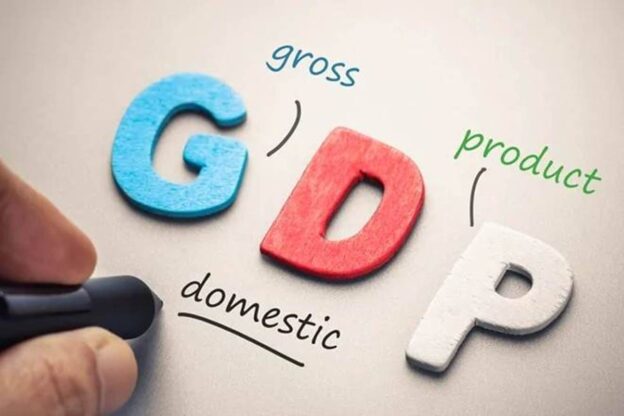The coordinated focus on digital infrastructure, investments in physical infrastructure, and progressive policy reforms is impressive. Here are some of the key drivers behind the India growth story
India is at a pivotal moment in its economic history, working to reclaim its position as a dominant force in global GDP. Once accounting for 25% of the world’s economic output before colonization, India’s current contribution stands at 3.4%, but the momentum for resurgence is unmistakable. Key structural reforms, innovative technologies, and strategic investments are setting the stage for India to become a key driver of global growth.
Morgan Stanley projects that India will surpass Japan and Germany to become the world’s third-largest economy by 2027, a significant leap that brings Prime Minister Narendra Modi’s vision of India as a developed nation by 2047 within reach. What is particularly impressive is the well-coordinated focus on digital infrastructure, investments in physical infrastructure, and progressive policy reforms. These elements are laying a strong foundation for India’s economic ascent, positioning it not only as a manufacturing hub but as a global leader in services and technology.
Strides In Digital Transformation
The transformative impact of India’s digital public infrastructure, known as India Stack, cannot be overstated. The country’s digital public infrastructure is enabling access to essential socio-economic services for over 1.4 billion citizens. Imagine the power of processing over 13 billion transactions monthly, as seen with the Unified Payments Interface (UPI); it’s not just about convenience, it’s about financial inclusion and economic efficiency on a massive scale.
The broader economic implications of this digital revolution are profound. By streamlining direct government transfers and welfare payments, the government has saved billions and ensured that funds reach the intended beneficiaries efficiently. This is growth with equity — laying the groundwork for long-term, sustainable development.
What stands out is the potential for digital finance, particularly in the fintech sector, to solve one of India’s longstanding issues: the credit gap. Despite the country’s massive consumption growth (projected to reach Rs 224 lakh crore or $3 trillion by FY26), there remains a gap between the demand and supply of credit, particularly for households and MSMEs. Here, fintech solutions are stepping in, banking the unbanked, and providing much-needed financial services to underserved areas. The deeper penetration of digital financial services will be a force multiplier for the nation’s consumption growth story, unlocking new opportunities across sectors.
At the heart of this transformation lies a bigger story: India is not just transforming itself but laying the groundwork for a new global economic order. The innovations being developed and scaled in India have the potential to reshape financial ecosystems worldwide. As more countries look to adopt similar digital public infrastructures, India is poised to be at the center of this revolution, exporting its model of inclusive, tech-driven development to the world.
Policy Reforms: The Backbone of Economic Integration
India’s proactive policy reforms have played a crucial role in attracting global investment and encouraging innovation. Initiatives like ‘Make in India’ and the PLI scheme are designed to boost domestic manufacturing and exports, helping India become a more significant player in global trade. Meanwhile, streamlined foreign direct investment (FDI) norms, reduced compliance burdens, and a single-window approval system make India an increasingly attractive destination for global businesses.
Recent policies and changes announced by the Reserve Bank of India (RBI) and the Insurance Regulatory and Development Authority of India (IRDAI) are creating a more favorable environment for both consumers and businesses, fostering growth and innovation. The RBI’s digital lending guidelines and account aggregator policy have streamlined financial access, while IRDAI’s Bima Trinity, ‘cashless everywhere’ initiative, including mandates like 3-hour cashless claim clearance, and the Union Cabinet’s expansion of the Ayushman Bharat Pradhan Mantri Jan Arogya Yojana to cover all senior citizens aged 70 and above, are significantly enhancing healthcare accessibility and transparency. These changes not only drive financial inclusion but also encourage competition and innovation within the financial and insurance sectors.
Infrastructure Boom: A Game Changer
India’s infrastructure boom is equally transformative. Under Prime Minister Modi’s leadership, India is witnessing an unprecedented surge in capital investments, with the latest budget allocating a record $133 billion toward infrastructure development. This substantial outlay is not just about constructing highways or airports—it’s about laying the groundwork for sustained growth, enhancing global competitiveness, and positioning India as a future economic powerhouse.
With logistics costs falling, India is fast becoming an attractive destination for manufacturers and exporters. The focus on urbanization and modernization is generating jobs and boosting tax revenues—two crucial levers for sustainable economic growth. The investments are not just in physical infrastructure but also in connectivity that enhances India’s ability to participate in global supply chains.
The private sector in India, contributing 37% of total investments, is booming as the consumption story unfolds, with forecasts predicting 20% annual corporate earnings growth over the next five years. Companies now benefit from lower corporate tax rates, strong financial health, and incentives like the Production-Linked Incentive (PLI) scheme, which has successfully bolstered domestic manufacturing.
India’s Path to Global Leadership
India’s economic transformation reflects a clear and ambitious vision for the future. Sustaining the current momentum in digital innovation, infrastructure development, and policy reform will be crucial in reclaiming its historical prominence in the global economy. Investments in both urban and rural infrastructure will continue to boost productivity, create jobs, and drive inclusive growth, ensuring that the benefits of this economic resurgence reach all citizens.
The choices India is making today—whether in technology, infrastructure, or governance—will not only shape its future but also redefine the global economic landscape. As Mahatma Gandhi said, “The future depends on what you do today.”
India’s decisive actions today are setting the stage for its emergence as a true global economic leader. By harnessing its demographic dividend and expanding export capabilities, India is well-positioned to meet both its near- and long-term goals.
https://www.moneycontrol.com/news/opinion/how-india-is-reclaiming-its-historical-dominance-in-global-gdp-12846376.html/amp








